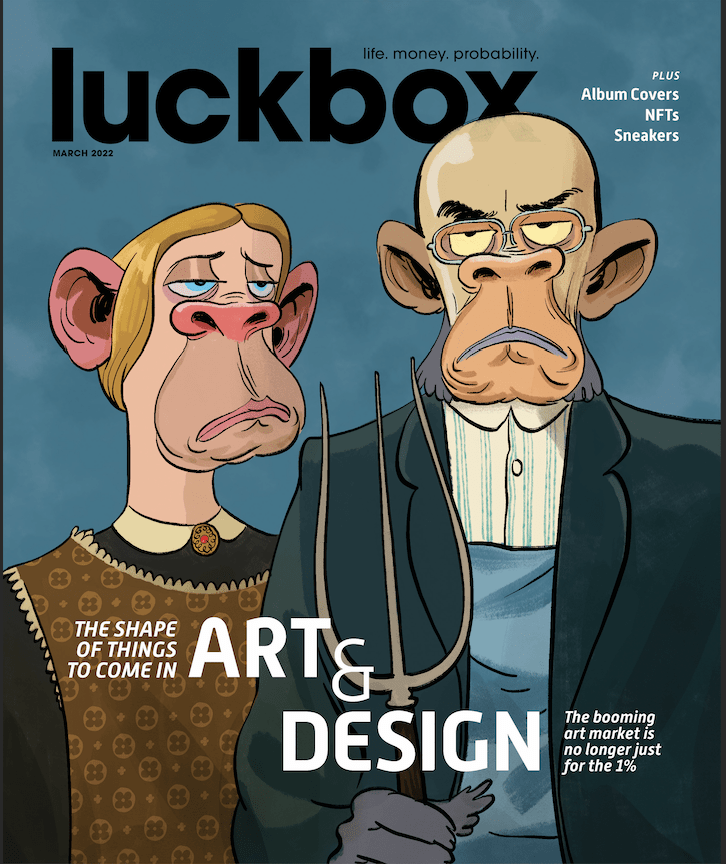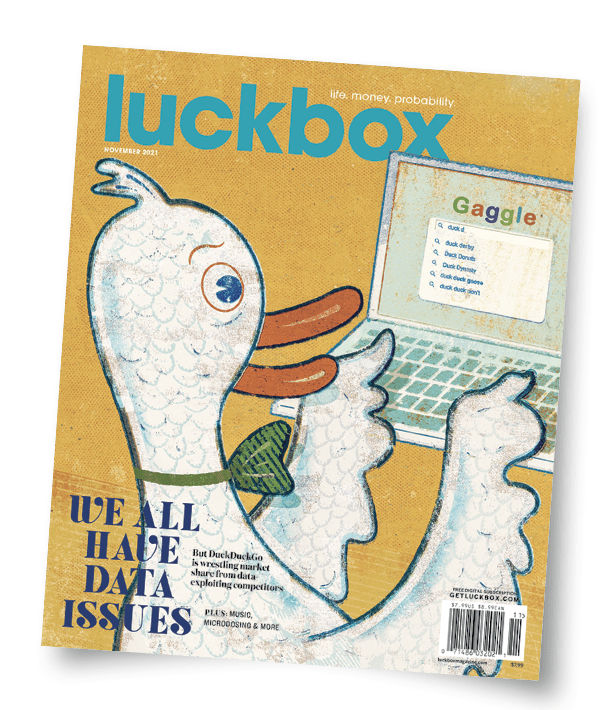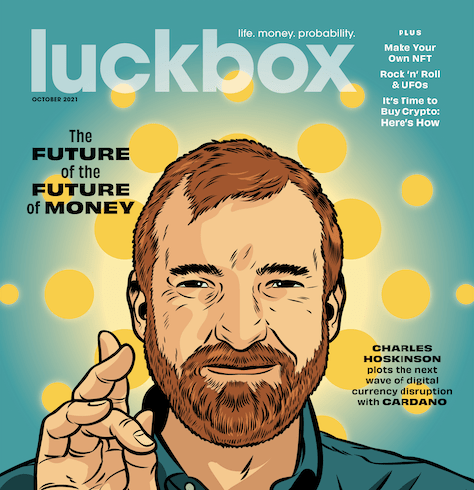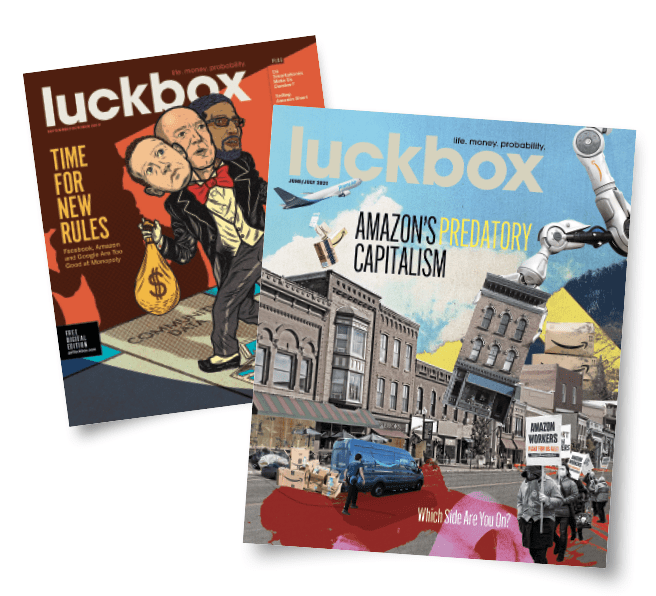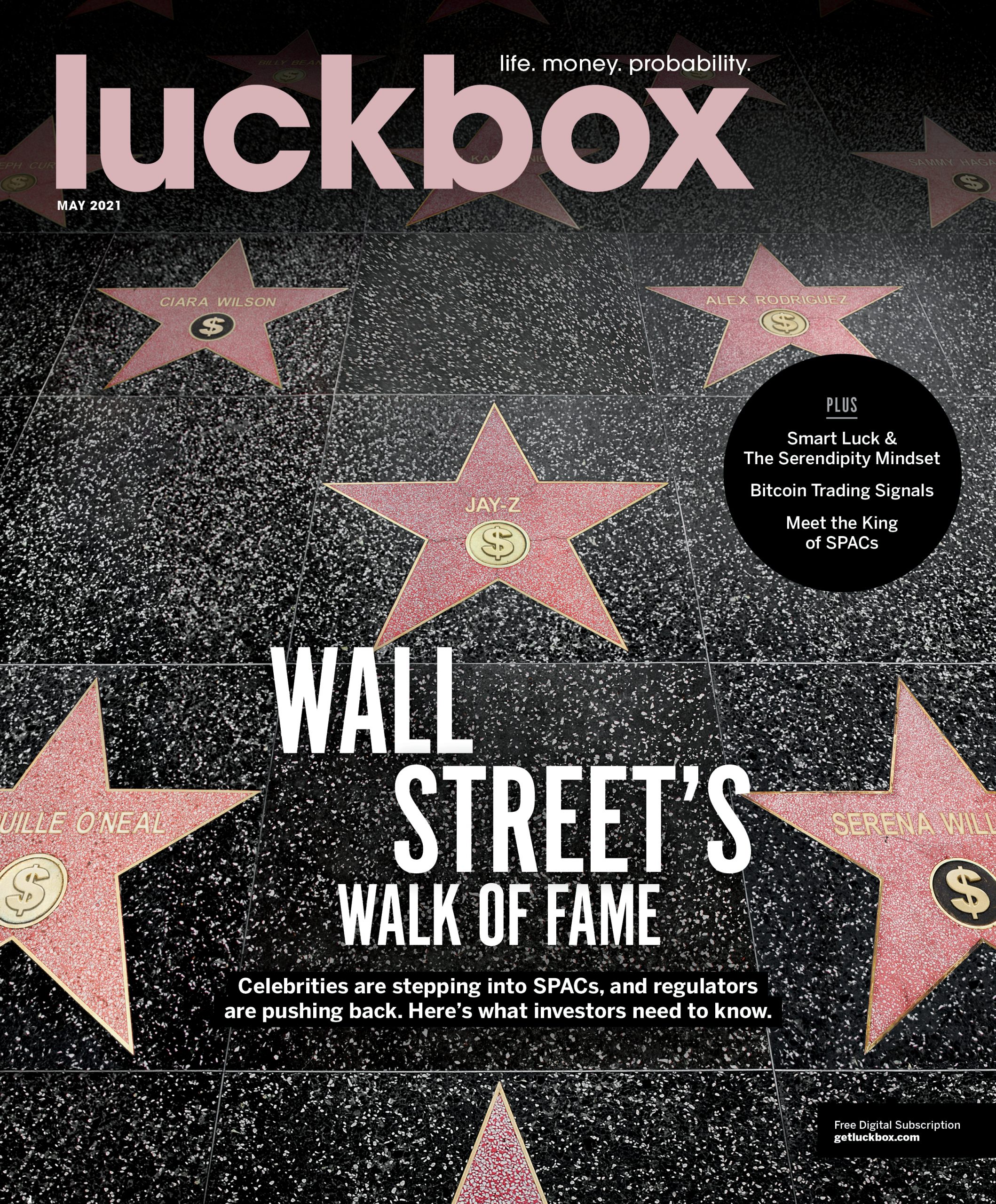YOUTUBE & THE STREAMING ECONOMY
Luckbox has a new look! Acting on your suggestions, we’ve repositioned familiar departments and introduced striking editorial elements. The makeover is based on a bold new layout by Grace Lee and Robert Priest of the award-winning Priest+Grace design firm and will be carried forward by the Luckbox design team of Gail Snable and Tim Hussey. With each upcoming issue, their visual fireworks will make our words more interesting!
YouTube might get an unintended boost from an unlikely source—the Hollywood writer’s strike.
With writers on hiatus, scripted new programming becomes scarce. That could force the public to abandon broadcast, cable and streaming TV and look elsewhere for entertainment.
Some viewers—especially younger ones—would turn to social media apps like YouTube and TikTok. What’s more, they might never come back to the narratives peddled on more-traditional TV.
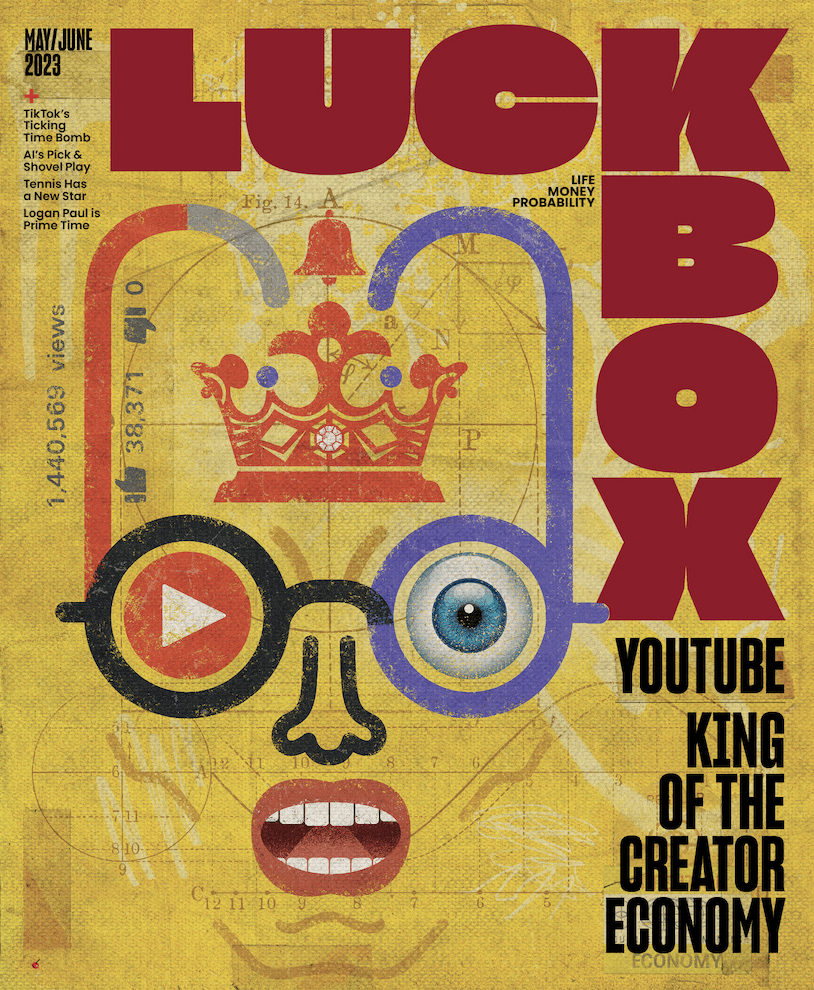
Bolstering YouTube would be a case of enlarging something already big. Last year it contributed more than $35 billion to America’s gross domestic product, according to the Oxford Economics advisory firm.
Alphabet-owned YouTube also provided the equivalent of nearly 400,000 full-time jobs last year, the report said. a
Plus, YouTube continues to grow at a healthy pace. The number of YouTube channels with more than a million subscribers increased by more than 15% last year, and the channels earning more than $100,000 increased 5%, Oxford Economics says.
Already the most popular streamer on America’s large-screen TVs, YouTube was the only major streaming service that gained viewing time in April, according to a Nielsen report.
Here’s how the market share of viewing time shook out among streaming services in April as measured by Nielsen: YouTube (8.1%), Netflix (6.9%), Hulu (3.3%), Amazon Prime Video (2.8%), Disney+ (1.8%), HBO Max (1.2%) and so on.
At least some of YouTube’s success may be coming at the expense of scripted television. Although streaming video on channels like Netflix is cutting into cable TV’s market share, YouTube may also be a factor in the decline of cable.
One reason for the prominence of YouTube is the popularity of its content creators. The best example, MrBeast, had 151 million subscribers as of May 2023. There’s apparently a lot of interest out there in costly stunts and acts of philanthropy.
But YouTube’s success in building viewership hasn’t translated into an increase in advertising dollars. Ad revenue declined 2.6% to $6.7 billion year over year during the first quarter. Google, by comparison, suffered a decrease of less than 1%.
In fact, YouTube has probably never made a profit in the 18 years since Alphabet’s Google division bought it, says Dan Rayburn, chairman of the Streaming Summit at the National Association of Broadcasters.
Rayburn has more to say about YouTube later in this issue of Luckbox. But let’s wrap up this column with a look at a YouTube competitor: TikTok.
Congress might ban TikTok—not because its short videos are truncating the American attention span, but instead because it’s capable of spying on the citizenry for the Chinese Communist Party.
But why not seize the opportunity presented by the TikTok controversy? Legislators and regulators could create rules that would not only tame TikTok but would also assure that all tech companies use data ethically and securely.
Writers could tell that story when they come back from their strike.
Click here to read the entire issue for free.
Correction: In the initial release of this issue we incorrectly attributed Dan Rayburn’s comment with respect to YouTube profitability to Samir Chaudry of the Colin and Samir creator economy podcast. We regret the error.
Two ways to send comments, criticisms and suggestions to Luckbox.

Email:
feedback@luckboxmagazine.com
Visit:
luckboxmagazine.com/survey
A new survey every issue











